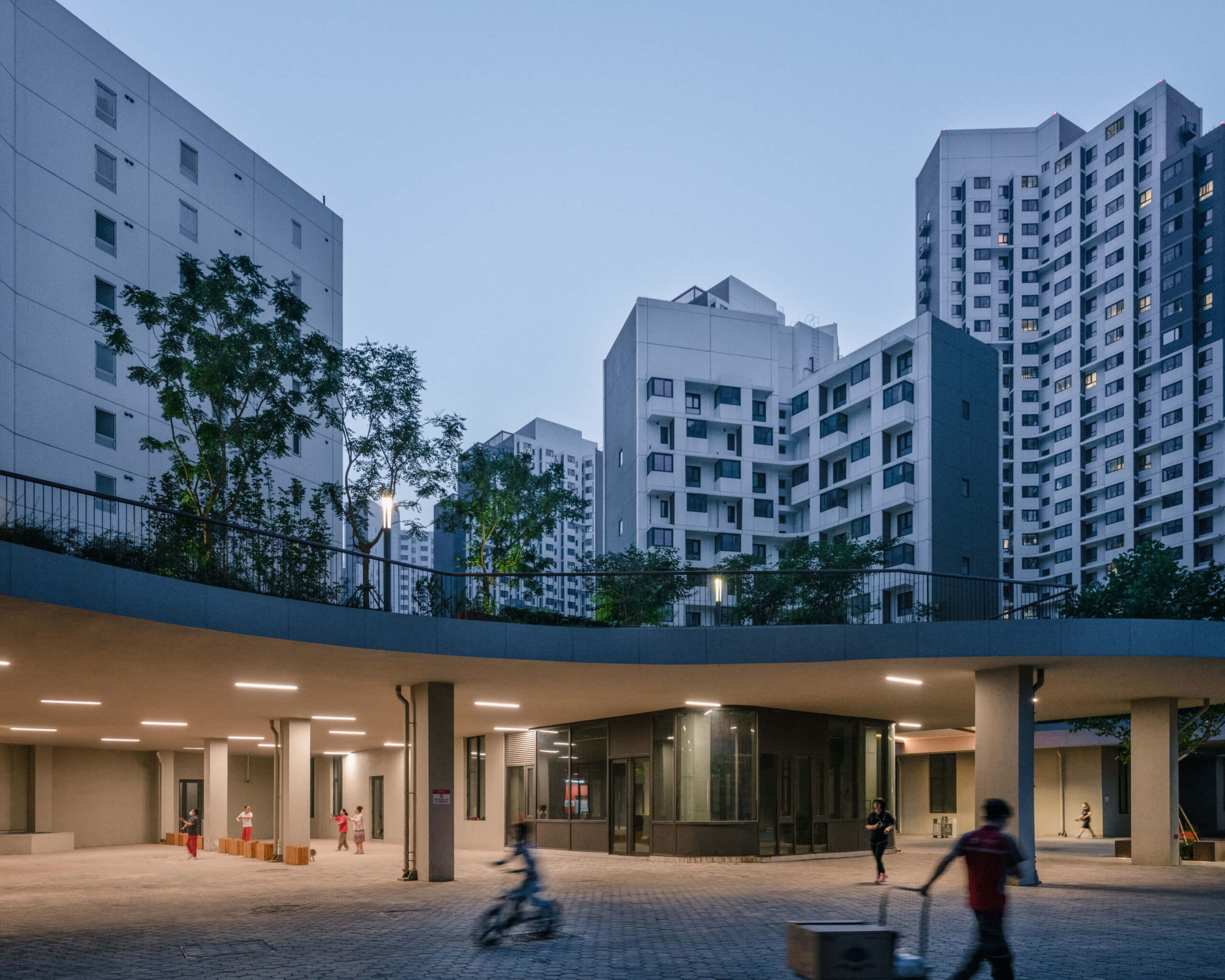Beijing’s MAD Architects is best known stateside for its completed and in-progress Los Angeles projects: a greenery-cloaked ersatz mountaintop village in Beverly Hills, a funicular-edged biomorphic office building set to rise above Sunset Boulevard, and a spaceship-cum-museum that, after considerable delay, will land in Exposition Park next year.
Back home, the Ma Yansong-led firm recently revealed Baiziwan (Baiziwan Social Housing), a sprawling affordable housing development spanning 12 apartment towers and more than 23 acres on the fringes of Beijing’s central business district. MAD has heralded the project, which is open to young professionals and citizens receiving assistance from the state, as “an important step forwards [sic] ideal living in China.”
First commissioned in 2014 by the Beijing Public Housing Center, an entity that ranks as the largest owner and operator of public rental housing in the Chinese capital city, Baiziwan marks the first-ever completed affordable housing project for MAD and is described by the firm as being the “culmination” of Yansong’s international-in-scope research into the development and design of social housing.
Dubbed “The Sociality of Social Housing,” MAD’s research has been further informed by Yansong’s “own engagements with this subject while teaching at Tsinghua University and the Beijing Architecture University,” as the firm noted in a press release. With the Beijing Public Housing Center commission, MAD embraced the “opportunity to improve the living conditions of low-income communities and introduce a fresh perspective to the current dull residential design image in China.”

The firm elaborated:
“Over the past decades, China’s residential design and market have shifted dramatically. Rapid real estate development has led to the homogenization of residential design. Welfare-oriented housing development has not been considered as priority during the housing privatization period. Entering the new era that China advances its investment in social housing, for existing low-income urban dwellers and influx of migrants, MAD aspires to offer a design solution for a more humane, equal, and vibrant living environment.”
Divided into six blocks as a means of fragmenting the immense scale of the development, Baiziwan’s dozen Y-shaped apartment buildings accommodate a total of 4,000 households—since its completion earlier this year, the ground-up neighborhood is 75 percent occupied. A broad and leafy avenue cleaving through the middle of Baiziwan is lined by a range of shops, restaurants, schools, medical clinics, elder care facilities, and much more. While the street level is accessible to all, Baiziwan residents also have exclusive access to a raised pedestrian walkway that winds throughout the compound, fusing together all six blocks and featuring a swath of elevated parkland complete with playgrounds, community gardens, sports courts, and an “ecological sanctuary.”
Between the greenery offered at street level, the pedestrian circuit-linked “floating gardens,” and vegetation-clad rooftops, Baiziwan’s total green coverage is 47 percent—a full 17 percent higher than the standard for residential developments in Beijing, according to the firm.
As for the 4,000 residential units themselves, they range between roughly 430 square feet and 646 square feet and enjoy ample natural light thanks to each tower’s Y-shaped footprint. Built predominately from prefabricated elements, the white facade-clad towers vary in height and their stepped forms evoke what MAD has called a “mountain” topography in the heart of Beijing. A pair of the towers enjoy “ultra-low energy low consumption” and are built to passivhaus design standards.
As noted by MAD, which also operates offices in L.A. and Rome in addition to Beijing, the design concept for Baiziwan Social Housing “integrates affordable housing communities with a universal ideal for dignified living.”
Source- The Architect’s Newspaper





